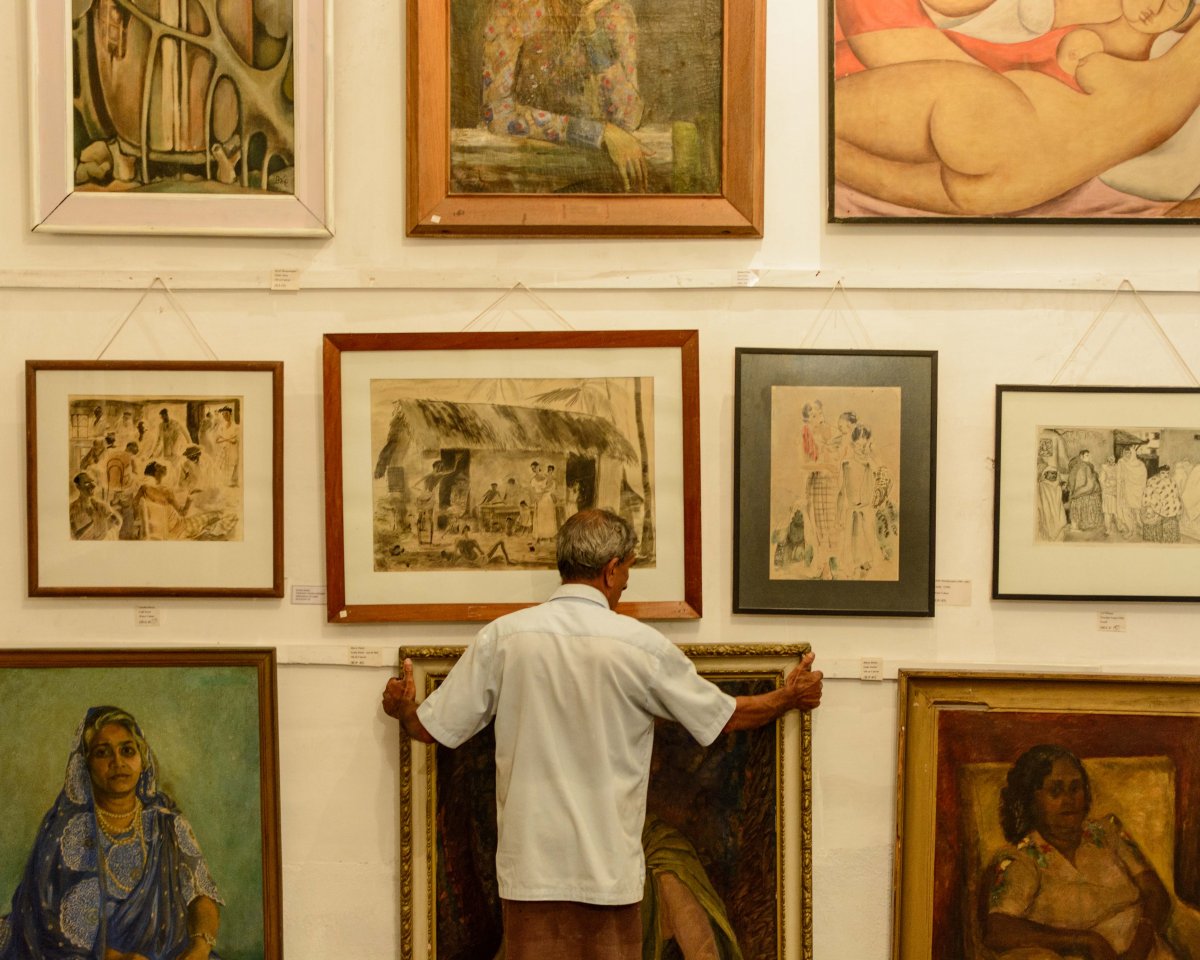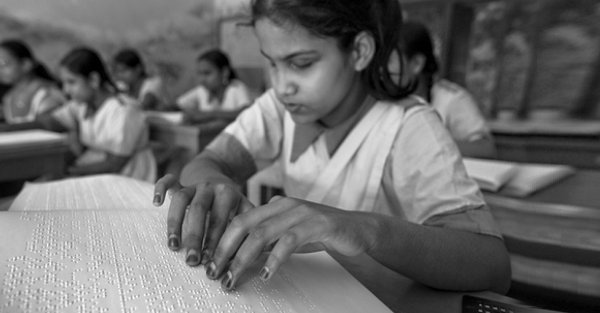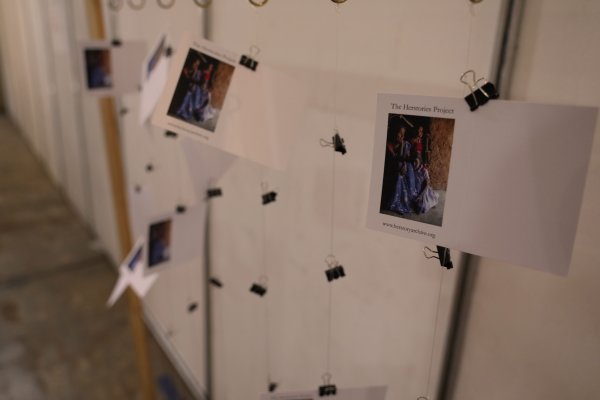
On a quiet by-road in the heart of Colombo, is a faded old house in which hang paintings by the famed ‘43 Group of artists. The house, once owned by Harry Pieris, is now the ‘Sapumal Foundation’—a gallery of art and other memorabilia. A series of interconnected rooms reveal myriad works of art—the private collection of Pieris, who was the secretary of the ’43 Group, from the time of its formation, till the very end. Several other pieces by notable artists have also taken their place on the walls of the house in Barnes Place.
“They called themselves the ’43 Group because it was formed in 1943,” Rohan de Soysa, current Chairman of the Sapumal Foundation explains. The group was made up of ten core members: Lionel Wendt, Harry Pieris, Geoffrey Beling, Richard Gabriel, Ivan Peiris, George Keyt, George Claessen, Aubrey Collette, Justin Deraniyagala and Manju Sri Thera. “Lionel Wendt was the pivot around which the group was formed, but the idea to form the group actually came from Ivan Peiris,” de Soysa said.
The ’43 Group was a breakaway from the established Ceylon Society of Arts which adhered to traditional forms of painting and frowned on experimental art forms, which the ’43 Group were interested in. Members of the ’43 Group were inspired by European modernism of the early 20th century as well as traditional art forms of India and Ceylon, and focused on interpreting art in their own respective style.
A year after the ’43 Group was formed, Lionel Wendt passed away leaving all of his artwork to his brother Harry. A year later, in 1945, Harry passed away and their home, named ‘Alborada’, was turned into the Lionel Wendt theater and art centre, which stands even today. Having successfully exhibited here and abroad—in Venice, France, England, and Brazil, the ’43 Group held its last formal exhibition in 1967. Many years later, in 1974, Harry Pieris decided to form the ‘Sapumal Foundation’.

The entrance to the house that once belonged to Harry Pieris. Image credit: Thiva Arunagirinathan/Roar Media
“He called it the Sapumal Foundation because ‘Sapumal’ was his nickname,” de Soysa said. Pieris, the eighth of ten children—six boys and four girls, was unlike the others who were fond of sports, dancing and other activities. In contrast, Harry, who had a wide range of interests in the arts, philosophy, theosophy and various other subjects, was often teased by his siblings and called ‘Sapumal’ after the flower which doesn’t ‘fully bloom’.
An alternate theory was that Harry was called ‘Sapumal’ after the historical Prince Sapumal, who reportedly didn’t smile very much. Harry, too, was not given to smiling, de Soysa explains, lending credence to the nickname. “But he got his own back by calling the Foundation the ‘Sapumal Foundation’”, de Soysa said. Incidentally, the unsmiling Prince Sapumal went on to becomes King Buvanaka Bahu VI.
The Sapumal Foundation now stands where three workers cottages, attached to Harry Pieris’s lavish house at the top of Barnes Place, were once situated. “After Harry’s father died, Harry’s mother Lydia Pieris didn’t want to continue living in the grand mansion—ballroom and all—she had lived in before her husband’s death. She suggested they move to the workers cottages situated on the premises, which would provide for a more basic life and simpler home for Harry and herself,” he said.
Harry lived in the rear end of the three interconnected cottages that made up their home, and which today make up the Sapumal Foundation. The house at the top of Barnes Place, and the extensive land surrounding it, was divided and given to Harry’s other siblings. After his mother’s death, when Harry decided to form the Sapumal Foundation, his collection of paintings, accumulated over 40-50 years were hung up on all the walls for all to see.

Pictures of Harry Pieris’s family members still stand in one of the rooms of the Sapumal Foundation. Image credit: Thiva Arunagirinathan/Roar Media
Harry’s intention, in setting up the Sapumal Foundation, was to allow more accessibility to art lovers. He reasoned that everyone should be able to appreciate art, and set up the Foundation deciding that an admission fee would not be charged, but instead, the foundation would be open to small (or large!) donations used for upkeep and to pay menial staff.
While the house has seen some changes, much of the original layout still stands; over the entrance to the Foundation is a notice that reads ‘Sapumal Foundation’ in all three languages, the chairs in the sitting room are shrouded with white cloth, a roundtable takes centre stage in the dining room. The rooms have been cleared and on all available walls pictures of various artists hang.
De Soysa said some of the furniture was auctioned off, while many of the books Pieris collected were given to his family. What remain—mostly on the subject of art—now functions as a reference library for art lovers to peruse. The house is also used by students of the University of Visual Arts, who visit yearly to make measured drawings of the whole place, including the paintings, as part of a university project.

The ‘Valerie Hunt’ Gallery, located in the garden of the Sapumal Foundation. Image credit: Thiva Arunagirinathan/Roar Media
In addition to serving as a relic from the past, the Sapumal Foundation is open to contemporary artists as a gallery. De Soysa explained how ‘fake walls’ were made by the administration to facilitate the work of new artists so that the paintings by the ’43 Group and others— including photographs by Lionel Wendt and caricatures by Bevis Bawa, Geoffrey Bawa’s brother—are preserved intact.
The Sapumal Foundation also features the work of artists Seevali Illangasinghe, Ranjit Fernando—who was a nephew of Harry Pieris—and Chandra Thenuwara, the principal of the Cora Abrahams Arts School. At the back of the house, in a small garden, is another gallery housing the paintings of Valerie Hunt—a painter relative of Harry Pieris, who specialised in stained-glass paintings.
The Foundation has been called a ‘hidden gem’ by local and foreign tourists who find portraits, murals, caricatures, photographs and other works of art, the work of the acclaimed ’43 Group, hidden in a rambling old house over 80 years old, a relic of an illustrious past.
Cover: Some of the art on display at the Sapumal Foundation. Image credit: Thiva Arunagirinathan/Roar Media







